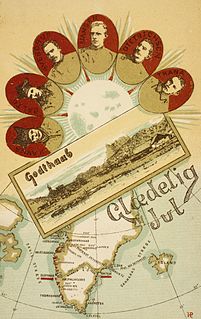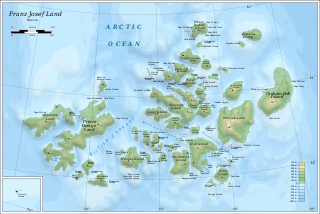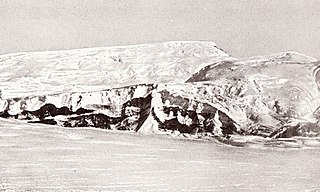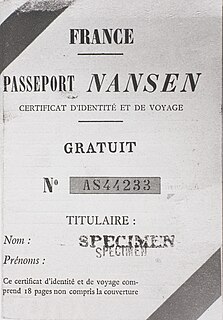 W
WFridtjof Wedel-Jarlsberg Nansen was a Norwegian polymath and Nobel Peace Prize laureate. He gained prominence at various points in his life as an explorer, scientist, diplomat and humanitarian. He led the team that made the first crossing of the Greenland interior in 1888, traversing the island on cross-country skis. He won international fame after reaching a record northern latitude of 86°14′ during his Fram expedition of 1893–1896. Although he retired from exploration after his return to Norway, his techniques of polar travel and his innovations in equipment and clothing influenced a generation of subsequent Arctic and Antarctic expeditions.
 W
WSamuel Johannesen Balto was a Northern Saami explorer and adventurer. Balto skied with Fridtjof Nansen across Greenland in 1888–89.
 W
WFram ("Forward") is a ship that was used in expeditions of the Arctic and Antarctic regions by the Norwegian explorers Fridtjof Nansen, Otto Sverdrup, Oscar Wisting, and Roald Amundsen between 1893 and 1912. It was designed and built by the Scottish-Norwegian shipwright Colin Archer for Fridtjof Nansen's 1893 Arctic expedition in which the plan was to freeze Fram into the Arctic ice sheet and float with it over the North Pole.
 W
WNansen's Fram expedition of 1893–1896 was an attempt by the Norwegian explorer Fridtjof Nansen to reach the geographical North Pole by harnessing the natural east–west current of the Arctic Ocean. In the face of much discouragement from other polar explorers, Nansen took his ship Fram to the New Siberian Islands in the eastern Arctic Ocean, froze her into the pack ice, and waited for the drift to carry her towards the pole. Impatient with the slow speed and erratic character of the drift, after 18 months Nansen and a chosen companion, Hjalmar Johansen, left the ship with a team of Samoyed dogs and sledges and made for the pole. They did not reach it, but they achieved a record Farthest North latitude of 86°13.6′N before a long retreat over ice and water to reach safety in Franz Josef Land. Meanwhile, Fram continued to drift westward, finally emerging in the North Atlantic Ocean.
 W
WFranz Josef Land, Frantz Iosef Land, Franz Joseph Land or Francis Joseph's Land is a Russian archipelago located in the Arctic Ocean. It is inhabited only by military personnel. It constitutes the northernmost part of Arkhangelsk Oblast and consists of 192 islands, which cover an area of 16,134 square kilometers (6,229 sq mi), stretching 375 kilometers (233 mi) from east to west and 234 kilometers (145 mi) from north to south. The islands are categorized in three groups, a western, central and eastern, separated by the British Channel and the Austrian Strait. The central group is further divided into a northern and southern section by the Markham Strait. The largest island is Prince George Land, which measures 2,741 square kilometers (1,058 sq mi), followed by Wilczek Land, Graham Bell Island and Alexandra Land.
 W
WMount Fridtjof Nansen is a high massive mountain which dominates the area between the heads of Strom and Axel Heiberg Glaciers, in the Queen Maud Mountains of Antarctica. Discovered by Roald Amundsen in 1911, and named by him for Fridtjof Nansen, polar explorer, who helped support Amundsen's expedition.
 W
WThe Fridtjof Nansen-class frigates are a class of frigates that are the main surface combatant units of the Royal Norwegian Navy. The ships are named after famous Norwegian explorers, with the lead ship of the class bearing the name of Fridtjof Nansen, the Norwegian scientist, explorer and humanitarian. Five ships were ordered from Spanish shipbuilder Bazan. The total projected cost for all five ships is 21 billion kr. As of November 2018, four are in active service and one has sunk and later scrapped.
 W
WThe Fridtjof Nansen Institute (FNI) is an independent research foundation specializing in research on international environmental, energy and resource management issues, including political and legal aspects.
 W
WThe Nansen International Office for Refugees was an organization established in 1930 by the League of Nations and named after Fridtjof Nansen, soon after his death, which was internationally in charge of refugees from war areas between 1930 and 1939. It is noted for developing the Nansen passport which allowed stateless people to travel between countries. It received the Nobel Peace Prize in 1938.
 W
WNansen Island or Isla Nansen Sur is the largest of the islands lying in Wilhelmina Bay off the west coast of Graham Land, lying 6.4 kilometres (4.0 mi) east of Emma Island. Nansen Island was discovered by the Belgian Antarctic Expedition (1897–1899) under Adrien de Gerlache and named for Dr. Fridtjof Nansen, noted Arctic explorer.
 W
WJason was a Norwegian whaling vessel laid down in 1881 by Rødsverven in Sandefjord, Norway, the same shipyard which later built Ernest Shackleton's ship Endurance. The ship, financed by Christen Christensen, an entrepreneur from Sandefjord, was noted for her participation in an 1892-1893 Antarctic expedition led by Carl Anton Larsen.
 W
WNansen is an old lunar impact crater along the northern limb of the Moon, on the eastern side of the north pole. This feature is viewed from the edge from the Earth, and it must be observed from orbit to see much detail. When brought into view during a favorable libration, this formation can be located by finding the crater Baillaud, then following the surface up towards the limb.
 W
WArild Moe is a Norwegian political scientist and Senior Research Fellow at the Fridtjof Nansen Institute in Lysaker, Norway. He has an MSc. from the University of Oslo and has also studied Russian and public law. Moe has been affiliated with the Fridtjof Nansen Institute since 1983 and has been a Guest Researcher at Stanford University and Adjunct Associate Professor at the Norwegian University Center in Saint Petersburg.
 W
WMount Nansen is a deeply eroded Mid-Cretaceous stratovolcano located 53 km (33 mi) west of Carmacks and 10 km (6.2 mi) west of Victoria Mountain in the central Yukon, Canada. It consists of rhyolite, dacite, andesite flows, breccias and tuff. Mount Nansen was formed during subducting under North America during the Mid-Cretaceous.
 W
WNansen Island is an island in Franz Josef Land, Russia. The island is partly glaciated and its area is 164 km2 (63 sq mi). The highest point of the island is 372 m (1,220 ft).
 W
WNansen Island, is a long and narrow island in the coast of the Kara Sea. Its length is 21 km (13 mi) and its average width about 2.5 km (1.6 mi). This island is located in an area of skerries right off the western coast of the Taymyr Peninsula.
 W
WNansen passports, originally and officially stateless persons passports, were internationally recognized refugee travel documents from 1922 to 1938, first issued by the League of Nations to stateless refugees. They quickly became known as "Nansen passports" for their promoter, the Norwegian statesman and polar explorer Fridtjof Nansen.
 W
WThe UNHCR Nansen Refugee Award is awarded annually by the United Nations High Commissioner for Refugees (UNHCR) to an individual, group, or organization in recognition of outstanding service to the cause of refugees, displaced or stateless people. It was established in 1954.
 W
WNansen Sound is an uninhabited strait in Qikiqtaaluk, Nunavut, Canada. It lies between western Grant Land on Ellesmere Island and Axel Heiberg Island. Tanquary Fiord or Greely Fiord enters the sound from the east.
 W
W